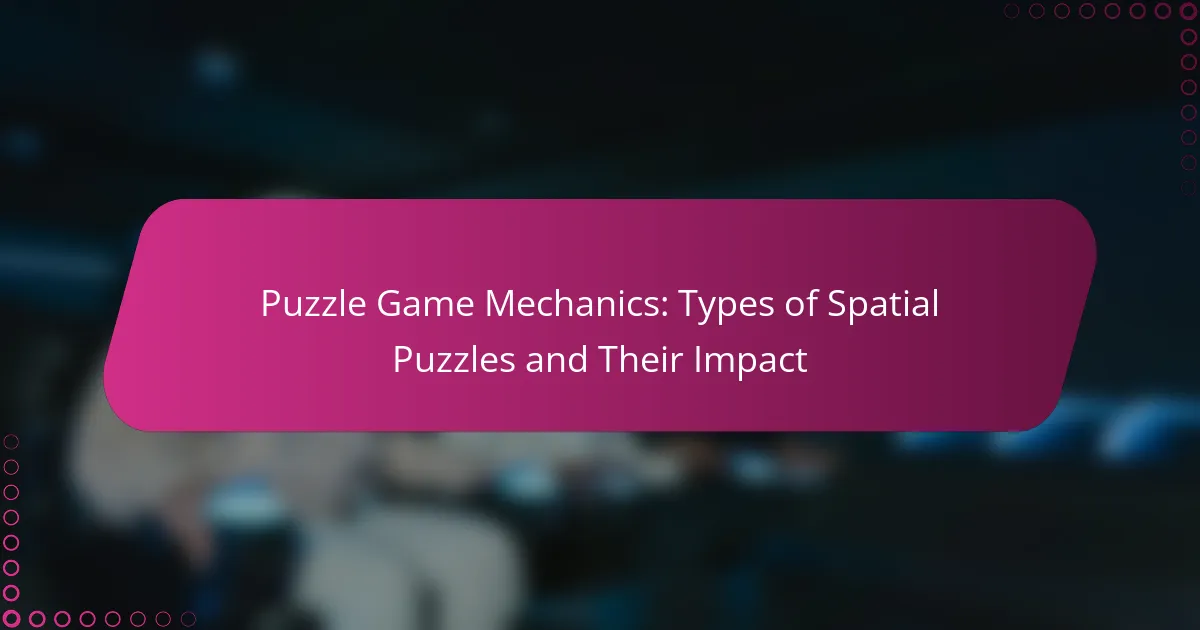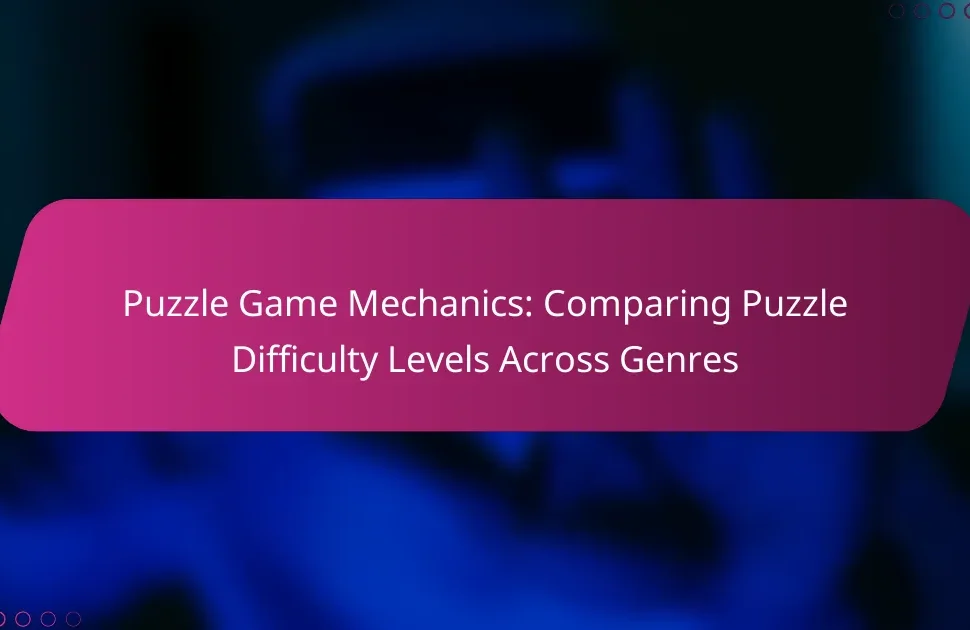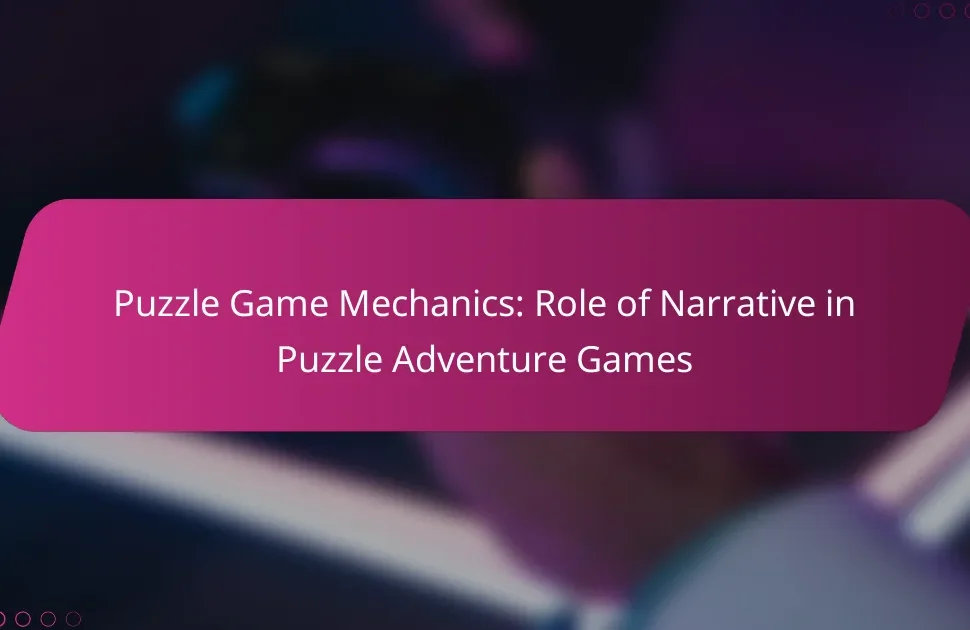Spatial puzzles engage players by challenging their cognitive skills and problem-solving abilities. This article explores key mechanics like object placement and rotation, different types of spatial puzzles such as mazes and jigsaw puzzles, and their impact on player engagement. It also examines unique and rare attributes that enhance puzzle designs, common design mistakes, and their effects on user experience. Understanding these elements can significantly improve player retention and enjoyment in puzzle games.

What are the core mechanics of spatial puzzles?
Spatial puzzles rely on mechanics that challenge players to manipulate their environment and think critically. Key mechanics include object placement, rotation, and spatial reasoning. Players often need to visualize three-dimensional spaces, making decisions based on their understanding of spatial relationships. These mechanics enhance cognitive skills and problem-solving abilities, providing a rewarding experience as players progress through increasingly complex challenges.
How do spatial puzzles challenge cognitive skills?
Spatial puzzles enhance cognitive skills by requiring problem-solving, spatial reasoning, and critical thinking. These puzzles engage various mental processes, fostering improvements in memory and attention.
Different types of spatial puzzles, like jigsaw puzzles, tangrams, and 3D modelling challenges, stimulate different cognitive attributes. For example, jigsaw puzzles improve visual-spatial perception, while tangrams enhance spatial manipulation skills.
Research indicates that regular engagement with spatial puzzles can lead to better performance in STEM subjects. This is attributed to the development of spatial awareness and the ability to visualize complex structures.
Overall, spatial puzzles serve as effective tools for cognitive skill enhancement, promoting brain health and improving overall mental agility.
Which game genres commonly feature spatial puzzles?
Puzzle games commonly featuring spatial puzzles include platformers, adventure games, and escape room games. These genres often require players to manipulate objects and navigate environments to solve challenges.
Platformers, like “Super Mario,” utilize spatial puzzles for level progression. Adventure games, such as “The Legend of Zelda,” integrate spatial reasoning to unlock areas and items. Escape room games, both physical and digital, challenge players with spatial arrangements to find clues and escape scenarios.
These genres enhance cognitive skills by promoting problem-solving and critical thinking through engaging spatial challenges.
What are the psychological benefits of solving spatial puzzles?
Solving spatial puzzles offers various psychological benefits, including enhanced problem-solving skills and improved cognitive flexibility. Engaging with these puzzles can boost spatial reasoning, which is crucial for tasks like navigation and understanding complex diagrams. Regular practice can also reduce stress and improve mood, as the focus required can serve as a form of mindfulness. Additionally, spatial puzzles promote perseverance and patience, as players often need to try multiple approaches before finding a solution.
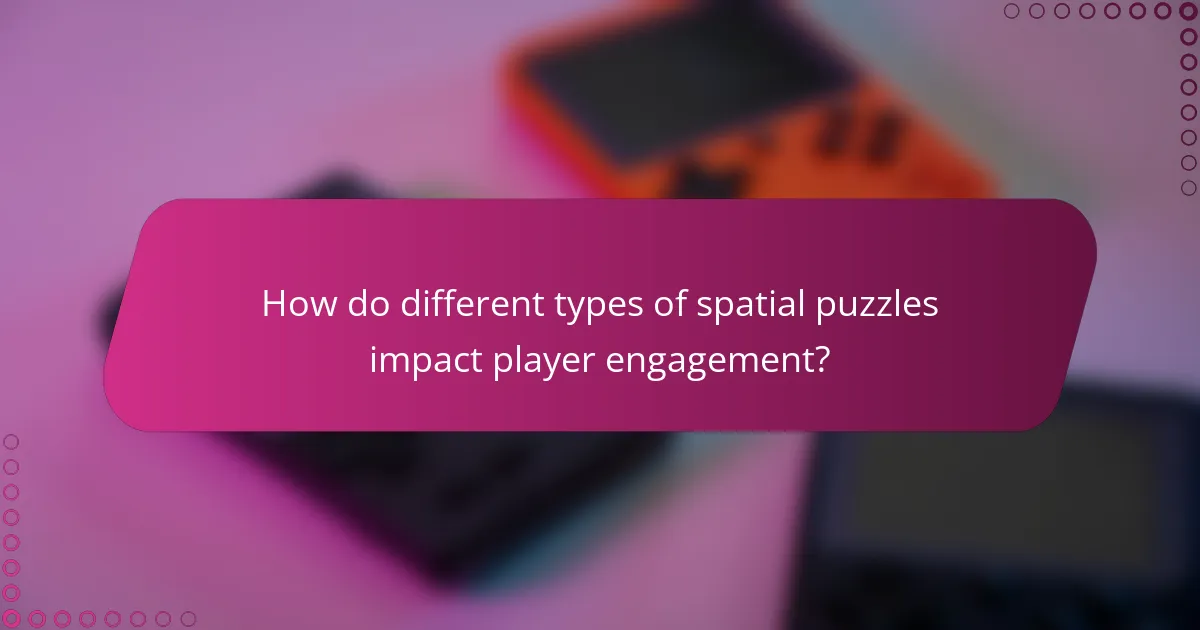
How do different types of spatial puzzles impact player engagement?
Different types of spatial puzzles significantly enhance player engagement by varying cognitive challenges and emotional responses. Spatial puzzles like mazes, jigsaw puzzles, and 3D models require players to visualize and manipulate objects mentally, fostering problem-solving skills.
Mazes often promote exploration and curiosity, while jigsaw puzzles enhance patience and concentration. 3D puzzles, with their complexity, provide a unique attribute of spatial reasoning development, making them particularly engaging.
As a result, players are more likely to remain invested in games that offer diverse spatial puzzle mechanics. This engagement can be measured through metrics like time spent on tasks and completion rates, indicating a strong correlation between puzzle type and player retention.
Which types of spatial puzzles are most popular in mobile gaming?
The most popular types of spatial puzzles in mobile gaming include match-three puzzles, grid-based puzzles, and 3D puzzles. Match-three puzzles require players to align three or more identical items, while grid-based puzzles often focus on arranging pieces to fit a specific layout. 3D puzzles challenge players to manipulate objects in a three-dimensional space, enhancing engagement through spatial reasoning. Each type offers unique mechanics that influence player experience and retention.
How do spatial puzzles vary across different gaming platforms?
Spatial puzzles vary significantly across gaming platforms due to differences in hardware capabilities, control schemes, and user interfaces. Mobile platforms often utilize touch controls, allowing for intuitive manipulation of puzzle elements. Console and PC platforms benefit from larger screens and more complex control schemes, enabling intricate puzzle designs.
The performance of spatial puzzles can also be influenced by platform-specific attributes. For instance, augmented reality games on mobile devices create immersive spatial puzzles by blending the real world with digital elements. In contrast, traditional puzzle games on consoles may focus on graphical fidelity and intricate storylines.
Additionally, the social aspect of puzzles can differ by platform. Multiplayer spatial puzzles on consoles foster collaboration, while single-player experiences on mobile devices emphasize personal challenge. Each platform shapes the user experience and engagement with spatial puzzles uniquely.
What role does difficulty level play in player retention?
Difficulty level significantly influences player retention in puzzle games. A balanced challenge keeps players engaged, while overly difficult puzzles can lead to frustration and abandonment. Gradually increasing difficulty can enhance the sense of achievement, encouraging players to return. Additionally, players often appreciate mastery over mechanics, which reinforces their commitment to the game.
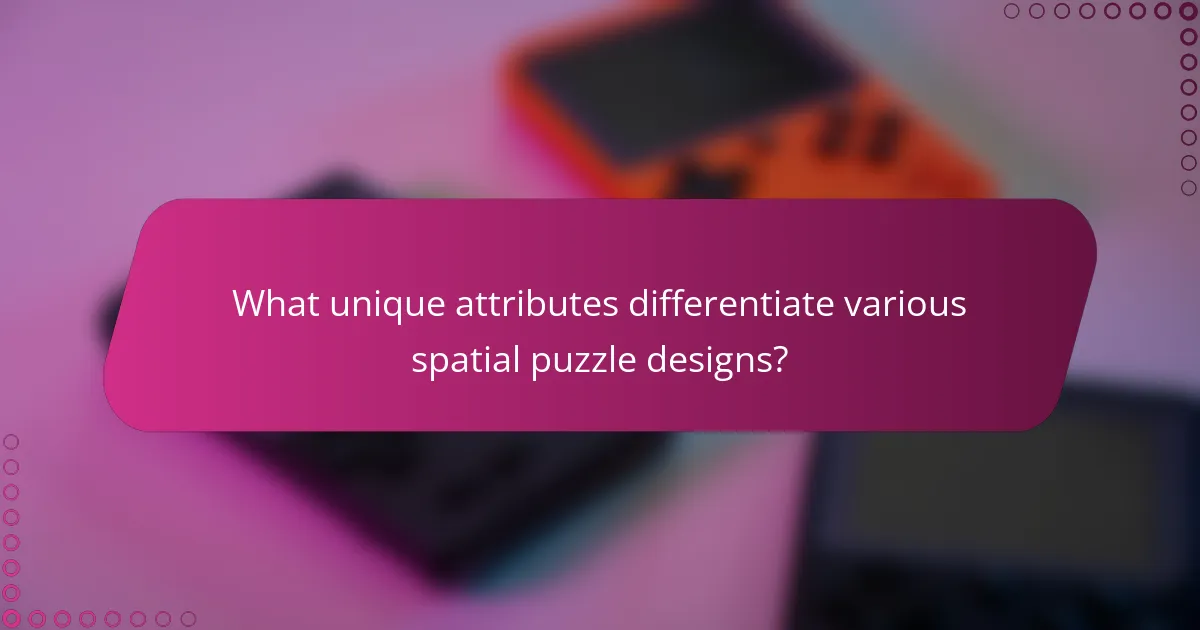
What unique attributes differentiate various spatial puzzle designs?
Unique attributes that differentiate various spatial puzzle designs include dimensionality, interactivity, visual aesthetics, and complexity levels. Dimensionality refers to whether puzzles operate in 2D or 3D space, impacting spatial reasoning. Interactivity involves user engagement through mechanics like rotation or manipulation, enhancing immersion. Visual aesthetics encompass the style and thematic elements, influencing user appeal. Complexity levels vary from simple to intricate designs, affecting challenge and player experience.
How does visual style influence the player’s experience with spatial puzzles?
Visual style significantly enhances the player’s experience with spatial puzzles by influencing perception and engagement. A well-designed visual aesthetic can create an immersive atmosphere, making puzzles more intuitive. For example, colour schemes can guide players toward solutions or indicate interactive elements. Additionally, unique visual cues can differentiate puzzle types, providing clarity and reducing frustration. A cohesive visual style fosters emotional connection, encouraging players to invest time and effort in solving challenges.
Which innovative mechanics are emerging in contemporary spatial puzzles?
Innovative mechanics in contemporary spatial puzzles include interactive environments, dynamic object manipulation, and augmented reality integration. These advancements enhance player engagement and problem-solving complexity. For example, the use of physics-based challenges requires players to consider real-world dynamics, increasing immersion. Additionally, procedural generation offers unique puzzle layouts, ensuring varied gameplay experiences. As a result, these mechanics redefine traditional puzzle-solving by fostering creativity and exploration.
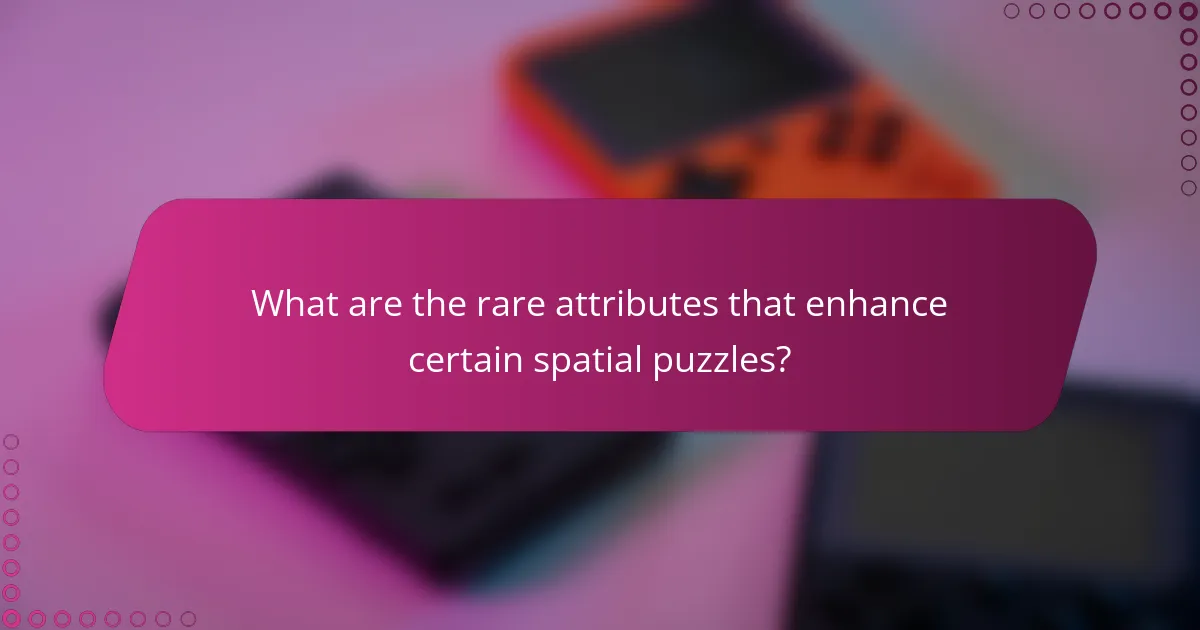
What are the rare attributes that enhance certain spatial puzzles?
Rare attributes that enhance certain spatial puzzles include unique visual patterns, unconventional movement mechanics, and interactive environmental elements. These traits create engaging experiences by challenging players’ perception and spatial reasoning. For instance, puzzles that incorporate optical illusions can alter a player’s understanding of depth and dimension, while puzzles with dynamic environments require adaptability. Additionally, puzzles featuring multi-layered solutions often encourage creative problem-solving.
How do narrative elements integrate with spatial puzzles in storytelling games?
Narrative elements enhance spatial puzzles in storytelling games by creating immersive experiences. They provide context, motivation, and emotional depth, making players more engaged. Integration occurs through character development, plot progression, and environmental storytelling, enriching puzzle-solving with narrative significance. This synergy encourages players to explore and interact meaningfully with the game world.
Which spatial puzzles incorporate augmented reality features?
Spatial puzzles that incorporate augmented reality features include games like “Pokémon GO,” “Ingress,” “Minecraft Earth,” and “AR Puzzles.” These games enhance user experience by blending digital elements with real-world environments, creating immersive problem-solving experiences. “Pokémon GO” uses AR to position characters in real-world locations, while “Ingress” focuses on location-based strategy. “Minecraft Earth” allows players to build structures in their surroundings, and “AR Puzzles” offer interactive challenges that require spatial reasoning in augmented contexts.
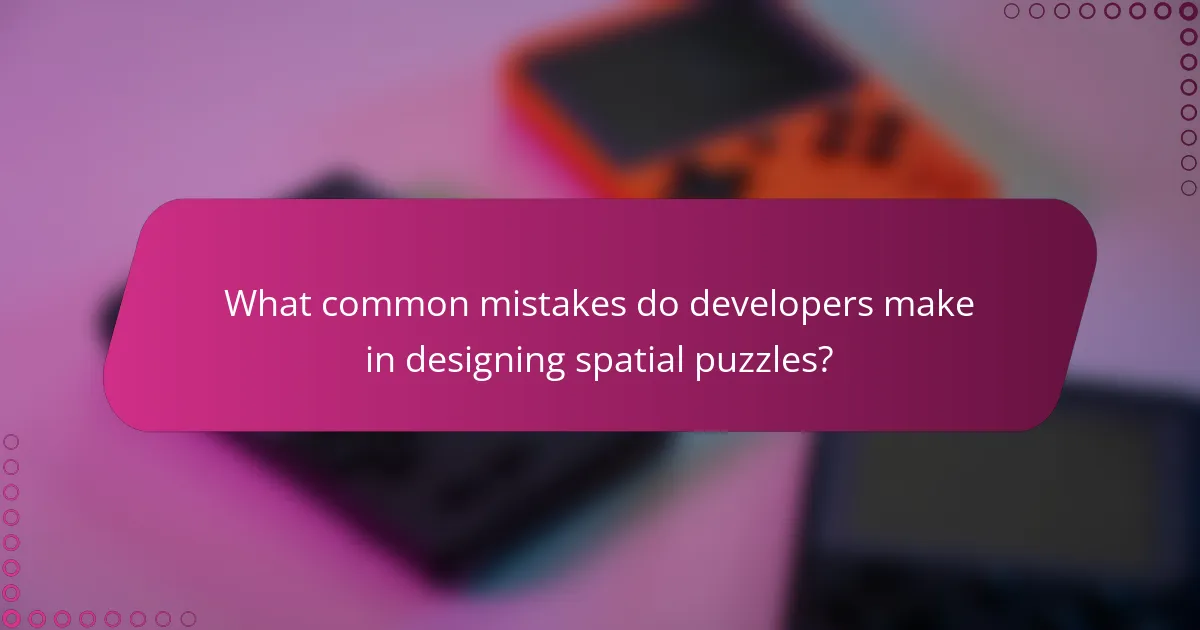
What common mistakes do developers make in designing spatial puzzles?
Developers often make mistakes in designing spatial puzzles by overlooking player perspective, failing to balance difficulty, and neglecting feedback mechanisms. These errors can lead to frustration and disengagement.
Common mistakes include:
1. Ignoring the player’s viewpoint, which can result in confusing layouts.
2. Creating puzzles that are either too easy or too hard, failing to provide a satisfying challenge.
3. Lacking clear feedback, leaving players uncertain about their progress or mistakes.
4. Not considering spatial awareness, leading to disorientation within the puzzle environment.
5. Overcomplicating mechanics, which can overwhelm players and detract from enjoyment.
Addressing these issues can enhance player experience and engagement in puzzle games.
How can developers balance challenge and accessibility in spatial puzzles?
Developers can balance challenge and accessibility in spatial puzzles by designing intuitive mechanics and offering adjustable difficulty levels. Focus on providing clear visual cues and tutorials to guide players. Incorporating diverse puzzle types can cater to varying skill levels, enhancing engagement. Regular playtesting ensures that challenges remain fair and enjoyable for all players.
What best practices can enhance the effectiveness of spatial puzzles in games?
Incorporating best practices can significantly enhance the effectiveness of spatial puzzles in games. Focus on intuitive design, ensuring players can easily understand mechanics without extensive tutorials.
Integrate feedback mechanisms to guide players through challenges, reinforcing learning and engagement. Use varied difficulty levels to accommodate different player skills, promoting a sense of achievement.
Incorporate narrative elements to create context, making puzzles more immersive. Lastly, allow for creative solutions, encouraging players to explore multiple approaches to problem-solving.
